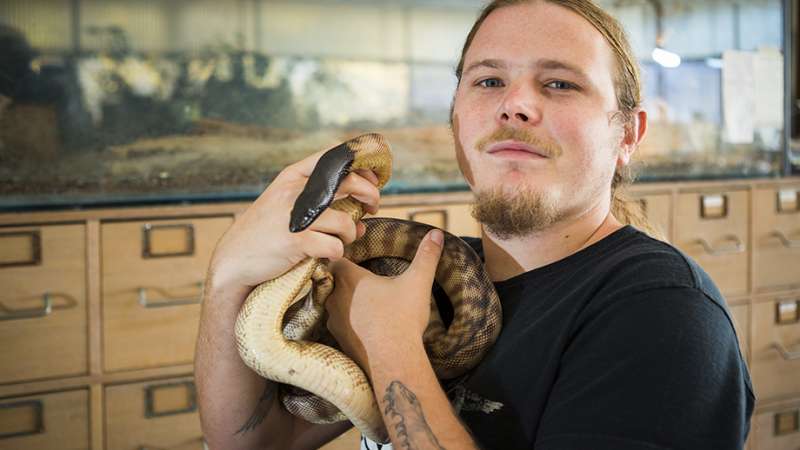Pythons and boas shed new light on reptile evolution

A new study into pythons and boas has for the first time found the two groups of snakes evolved independently to share similar traits, shedding new light on how the reptiles evolved.
Pythons and boas are two families that include the largest snakes in the world, like the reticulated python and the anaconda boa, which have been known to grow close to eight meters in length.
The Australian National University (ANU) study found that by living in the same habitat, pythons and boas evolved independently to look similar. This happened at least five times in different habitats. Aquatic pythons look like aquatic boas, burrowing pythons look like borrowing boas and tree-dwelling pythons look like tree-dwelling boas.
Lead researcher Damien Esquerre said the study found pythons and boas were an important example of convergent evolution in reptiles. Convergent evolution is where species adapt to the same conditions and evolve similar traits.
"The finding of such a strong case of convergent evolution demonstrates the power of natural selection and adaptation in living organisms," said Mr Esquerre from the ANU Research School of Biology.
"If we see that different groups evolve the same things independently when they face the same challenges, we can find predictability in evolution."
Other famous examples of convergent evolution are sharks and dolphins, which are not related but have evolved similar body plans. Similarly, the extinct Tasmanian Tiger, a marsupial mammal, and the wolf, a placental mammal, evolved similar body plans.
Although they look the similar and both constrict their prey, the pythons and boas last shared a common ancestor 70 million years ago in the age of the dinosaurs.
The research focused on the head shape of close to 2,000 specimens in museum collections in Australia and America.
Mr Esquerre said not all evolution was driven by natural selection, but examples such as pythons and boas reinforce its importance in shaping biological diversity.
"By having greater understanding of the evolution of pythons and boas, researchers can now have better ideas of what extinct fossil snakes were doing before they disappeared," he said.
The research has been published in Ecology Letters.
More information: Damien Esquerré et al. Parallel selective pressures drive convergent diversification of phenotypes in pythons and boas, Ecology Letters (2016). DOI: 10.1111/ele.12620
Journal information: Ecology Letters
Provided by Australian National University



















